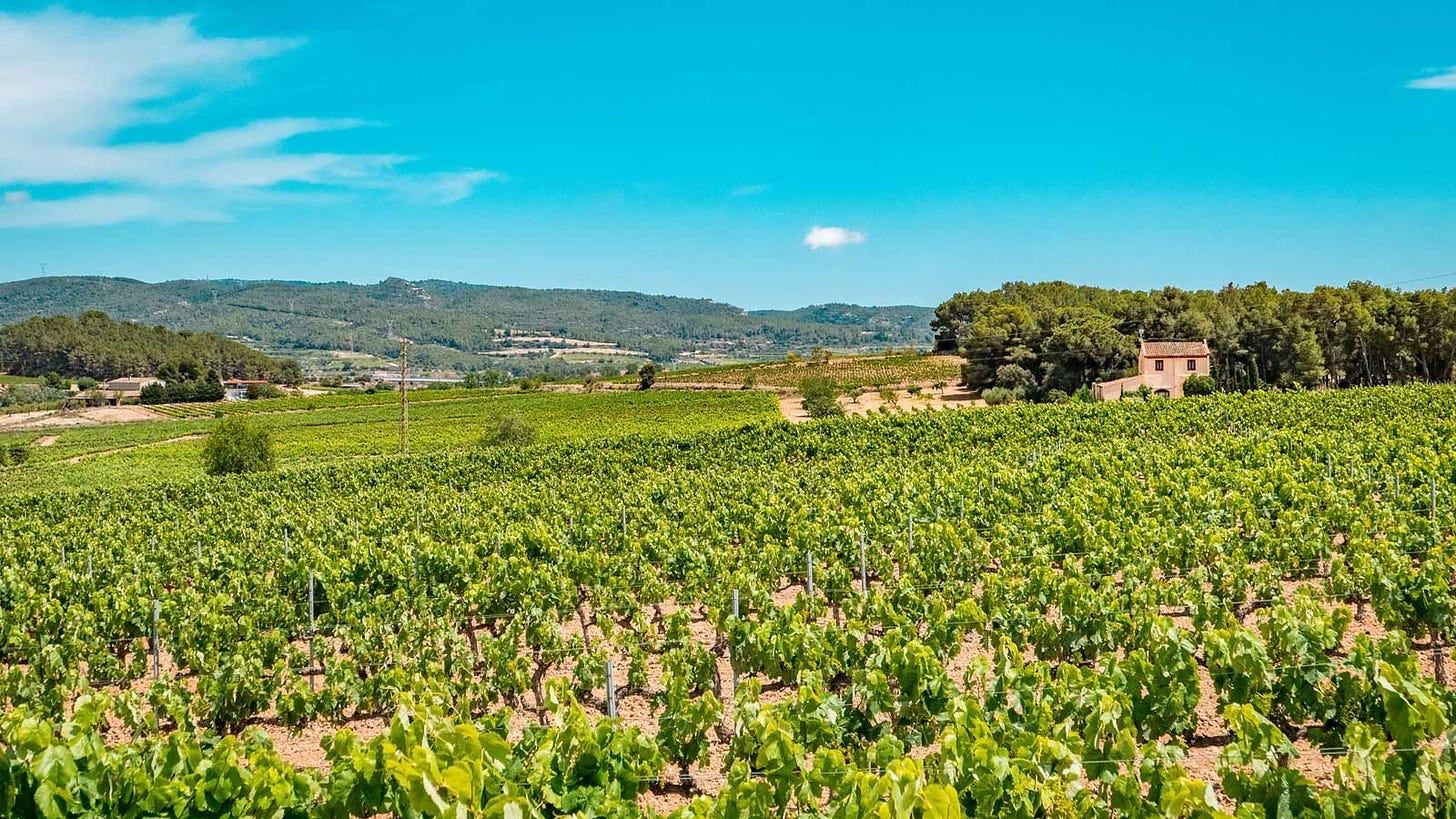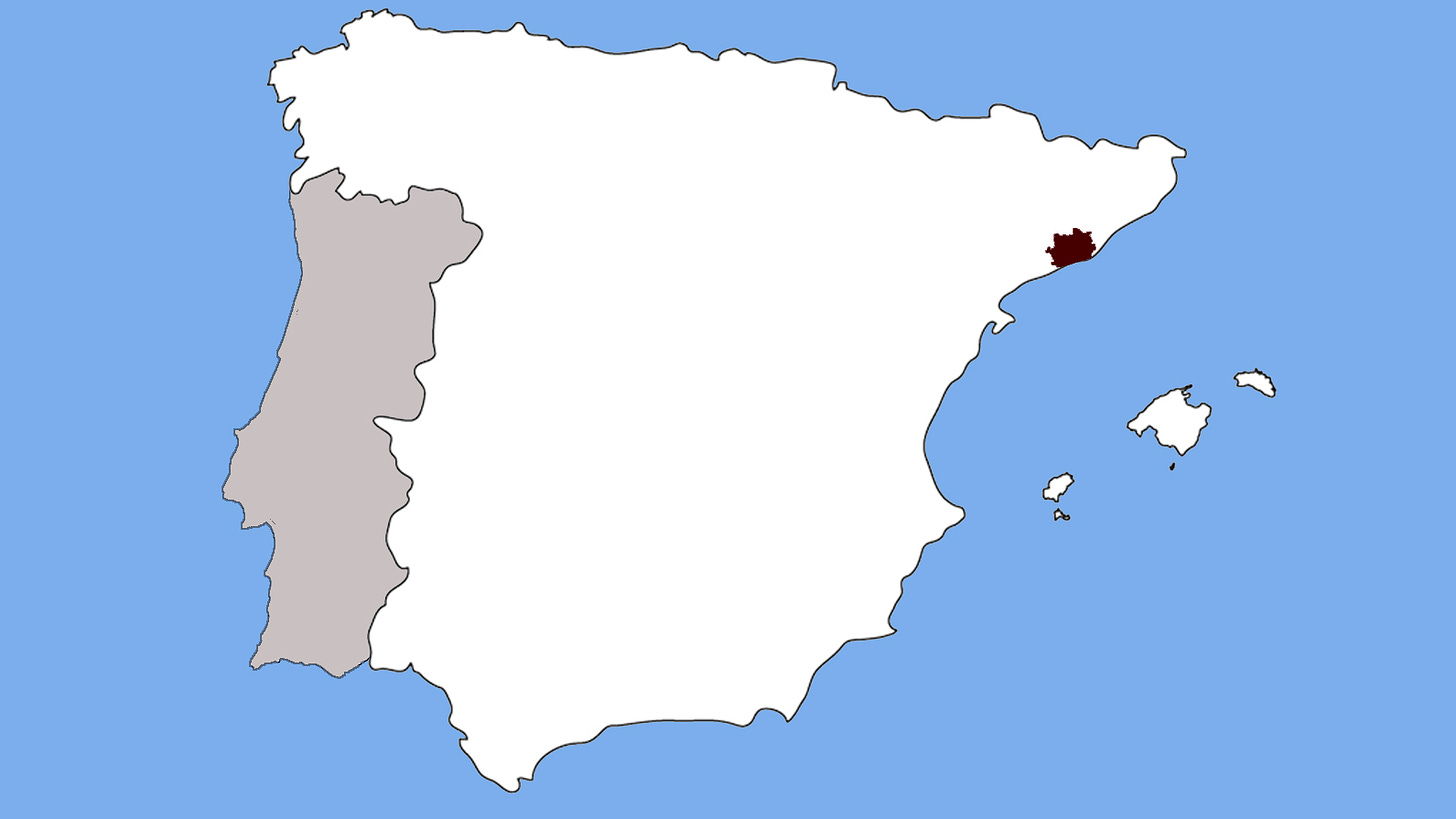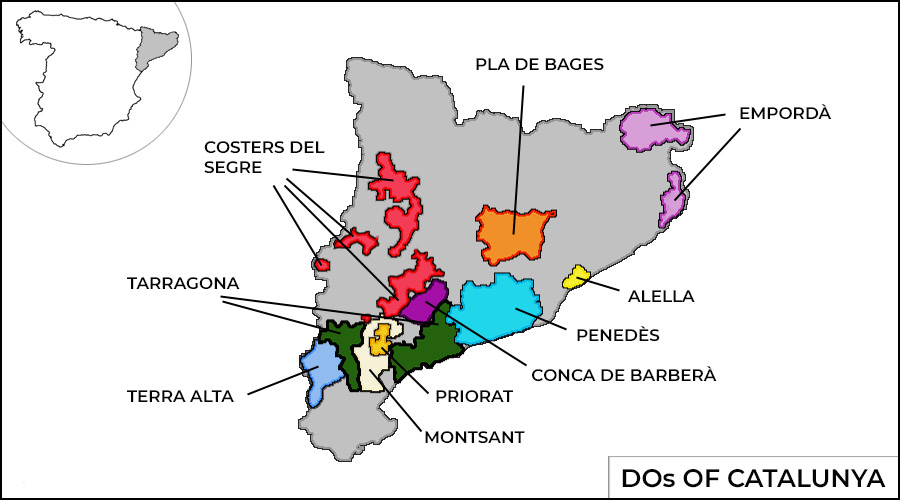DO Penedès
This article was originally published on our old website, Simply Spanish Wine
Key Points
Grape varieties: Garnacha (Garnatxa in Catalan), Cariñena (Samsó in Catalan), Monastrell, Tempranillo (Ull de Llebre in Catalan), Xarel-lo, Macabeo, Parellada, Chardonnay
Hectares planted: 25,000 Ha
Grape growers: 2,900
Wineries: 170
About Penedès
The Penedès DO covers a long strip of land sandwiched between the sea and the mountains about halfway between Barcelona and Tarragona. With a total vineyard area of 25,000 hectares, it is the largest of the 11 DOs in Catalunya, and they’ve been making wine here on a large scale since the 19th century. The proximity of Barcelona just 50km away provided ready local customers, while the ravages of phylloxera in France in the mid-19th century opened up a market there too, at least until the pest arrived in Penedès in the late 1880s.
Apart from its still wines, Penedès is best known for Cava. While Spain’s favourite sparkling wine is actually produced in 7 different regions across Spain under the DO Cava brand, it was essentially invented by the Codorniu family in the 1870s in the town of Sant Sadurní d’Anoia. The town remains the centre for Cava production to this day, churning out about 150 million bottles a year, or close to 75% of all Spanish Cava.
The Terrain of Penedès
Penedès can be subdivided into three distinct zones. The inland zone of Alt Penedès borders the inland mountain range and rises to between 500 and 800 metres above sea level. As you’d expect with all that altitude, this is where some of the DO’s best grapes are grown and where you’ll find some of the more minority varieties like Riesling, Gewürztraminer or Muscat of Alexandria. The central zone or Medio Penedès is a broad valley about 500 metres above sea level. This is the most productive zone in the DO, separated from the sea by the Garraf Hills, and it’s where most of the Macabeo, Xarello, and Parellada grapes are grown for Cava. Finally, there is the warmest part of the DO, the coastal strip known as Penedès Marítimo or Bajo (lower or maritime Penedès).
With all this focus on zones and differentiation, it’s no surprise that in the last decade two new brands, or self-styled ¨labels of excellence¨, Classic Penedès and Corpinnat, have been launched within Penedès by groups of producers keen to flag up that their wines are made from 100% organic grapes, all of which are ¨historic¨ varieties grown within DO Penedès territory, and that their wines undergo significant ageing before release (15 months in the cellar in the case of Classic Penedès, 18 for Corpinnat).
Climate in Penedès
Penedès enjoys a typically warm and mild Mediterranean climate, with lots of sunlight throughout the year and fairly low rainfall, except for the higher inland areas in the Alt Penedès where the average is closer to 650 mm/year and temperature differences between day and night-time are more marked.
Grapes used in Penedès
Cava aside, Penedès is perhaps best known for its still white wines, normally made to be drunk young although winemakers are increasingly experimenting with barrel ageing. Xarello remains the main traditional variety of the DO, producing wines with intense aromas and flavours and sometimes with quite an earthy or herbal character. You’ll also find some Chardonnay, the small, sweet and aromatic Malvasia de Sitges, and even some Riesling in the higher areas. On the red side, Garnatxa, Samsó and Ull de Llebre remain popular in the lower and middle zones, while Cabernet Sauvignon and Monastrell tend to be planted higher up.
Summary
If you’re already a Cava fan, now is the time to venture a little further afield and try some of the wonderful aromatic white wines of Penedès. Base yourself in Sant Sadurní d’Anoia or Vilafranca de Penedès, delve into the history of Cava or grab the car and explore the beautiful countryside, vineyard landscapes and coastline that this region has to offer.








